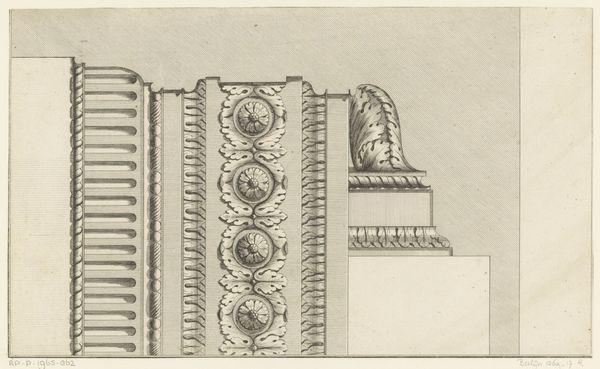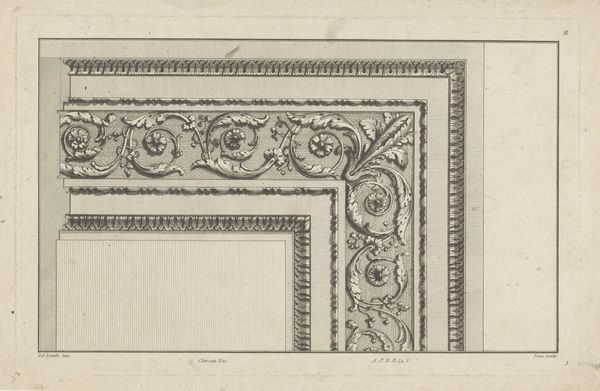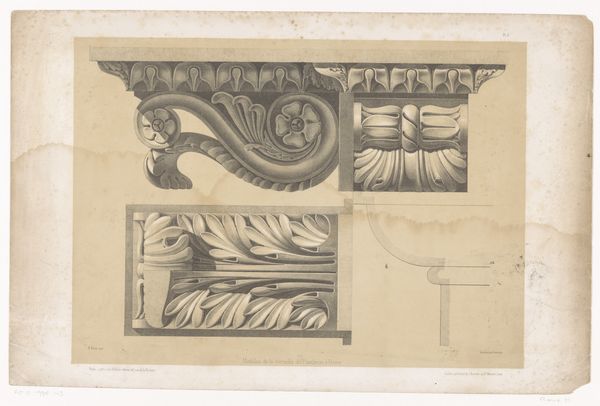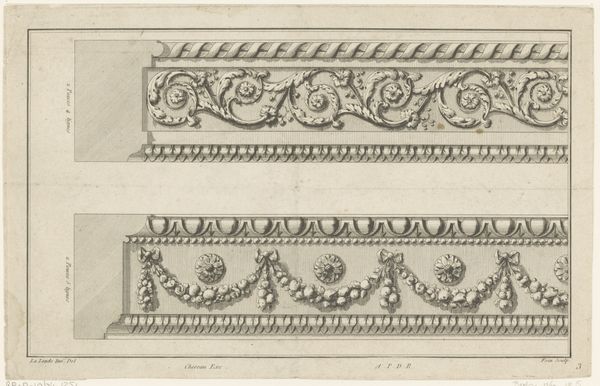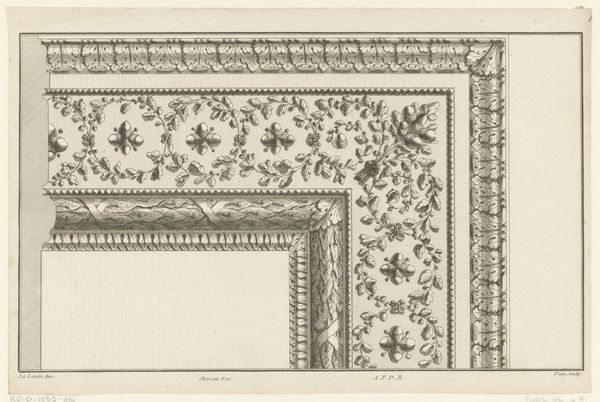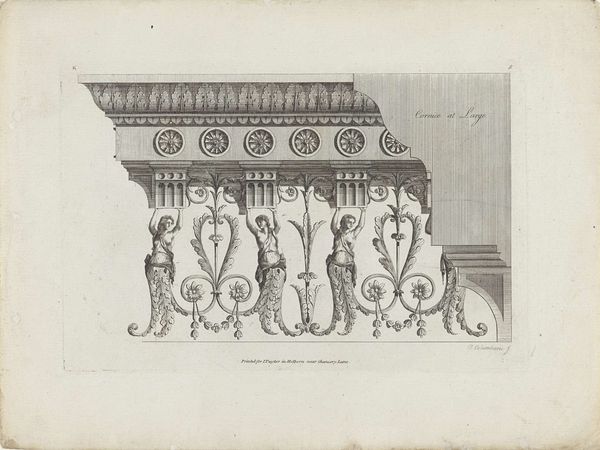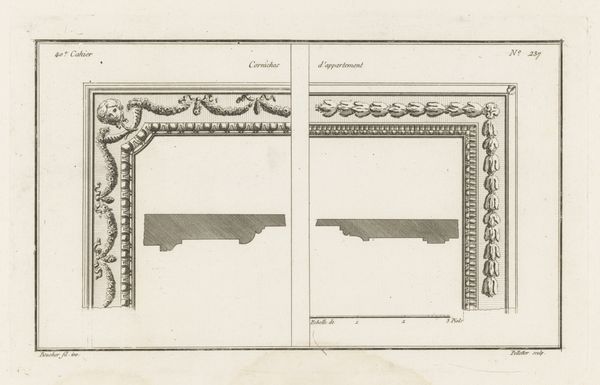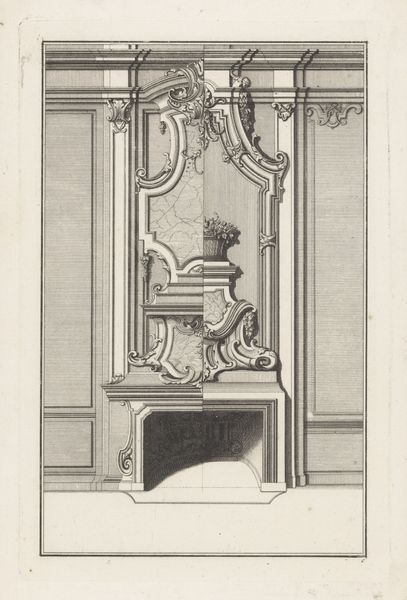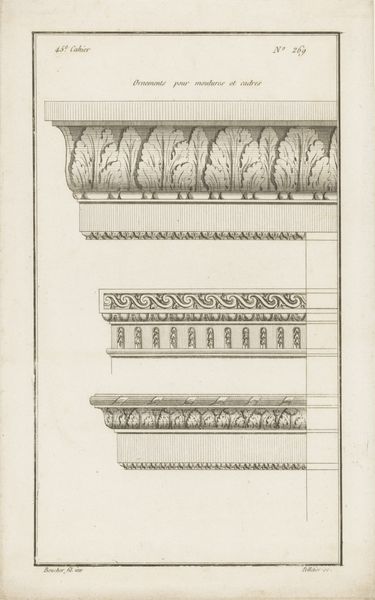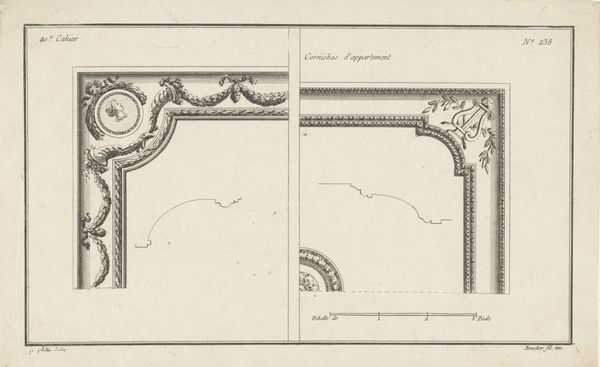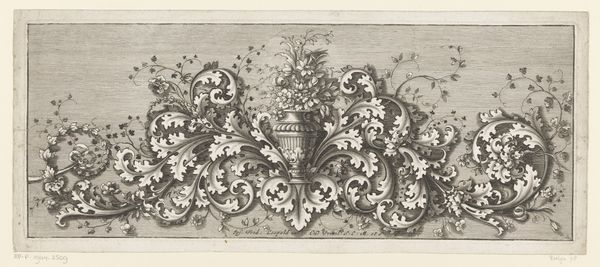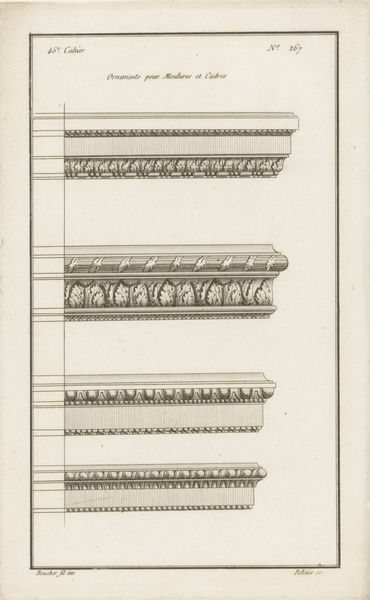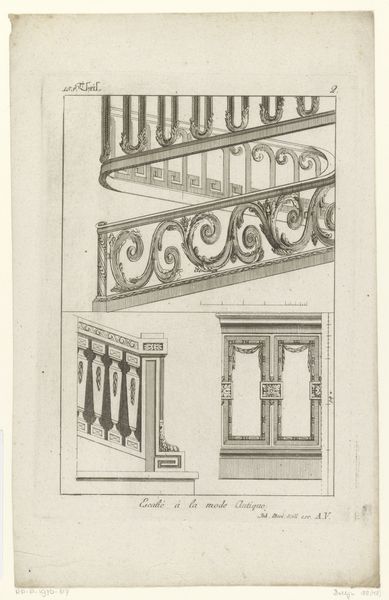
drawing, paper, engraving
#
drawing
#
neoclacissism
#
paper
#
fruit
#
decorative-art
#
engraving
Dimensions: height 204 mm, width 307 mm
Copyright: Rijks Museum: Open Domain
Curator: Looking at this meticulously rendered image, I am struck by its clarity. The work is called "Kroonlijst met fruit," or "Cornice with Fruit," made around 1784-1785, created by Augustin Foin. The piece, an engraving, showcases a potential decorative element, almost architectural, made with precise lines on paper. Editor: It gives off a cool and collected vibe. At first glance, I am drawn to the almost edible quality of the rendering. The artist clearly enjoyed detailing the abundance of these fruits, maybe even relishing in the visual effect more than a deeper meaning. Curator: What catches my eye is that this piece represents Neoclassical art and decorative style, prevalent during the late 18th century. There's a turn away from the extravagance of the Baroque period, which is being traded here for something controlled, reserved, almost mathematical in its precision. Editor: You see a formal artistic intention, and I cannot help but look into those clusters of grapes and swollen pomegranates that symbolize bounty and divine favor! Since the fruit is arranged around the other ornaments in the overall architecture, could this tell us how precious nourishment was considered within a home or place of commerce? Curator: Certainly. This "fruit cornice" as the name translates, would be found inside of someone's place of dwelling or commerce. Because architectural drawings like this were printed and distributed widely, you can picture people looking through similar images and designs while choosing features for new buildings that symbolized order, balance, and idealized beauty. Editor: But that focus on geometric perfection! While there's definitely a naturalistic appeal here with these forms of ripe fruit, its tight order makes me question how connected people were to these harvest symbols as more people moved into cities, and further from their sources. The piece captures a moment of transition from organic to manufactured imagery, almost a premonition for later industrial arts. Curator: That tension between nature and design is fascinating! The work’s cool detachment provides the intellectual framework through which we interpret Foin’s work, understanding that, yes, something has been lost as much as has been found. Editor: I agree. And in understanding this cultural shift we realize these decorative arts also reflect complex values far beyond pure artistry.
Comments
No comments
Be the first to comment and join the conversation on the ultimate creative platform.
